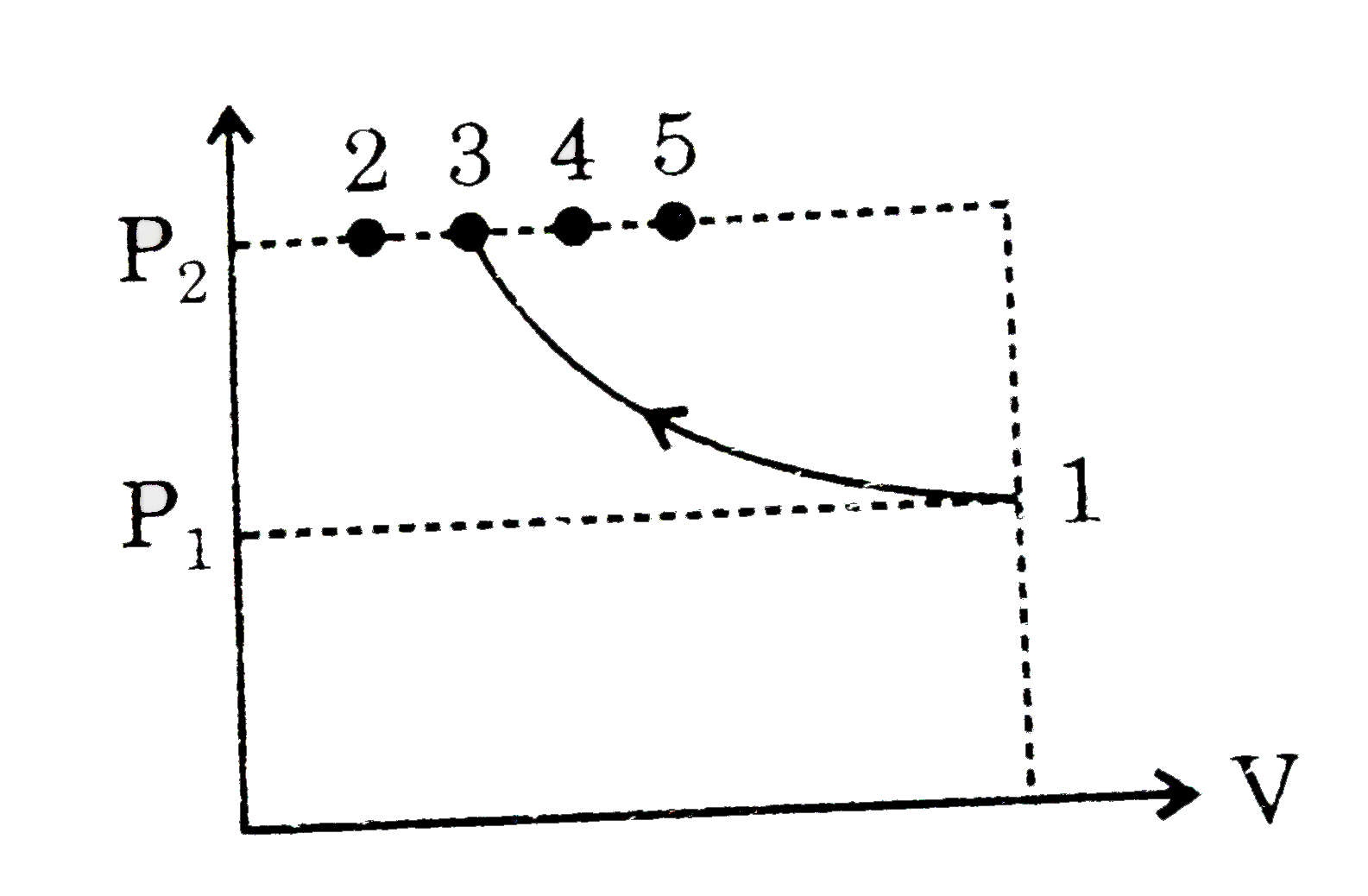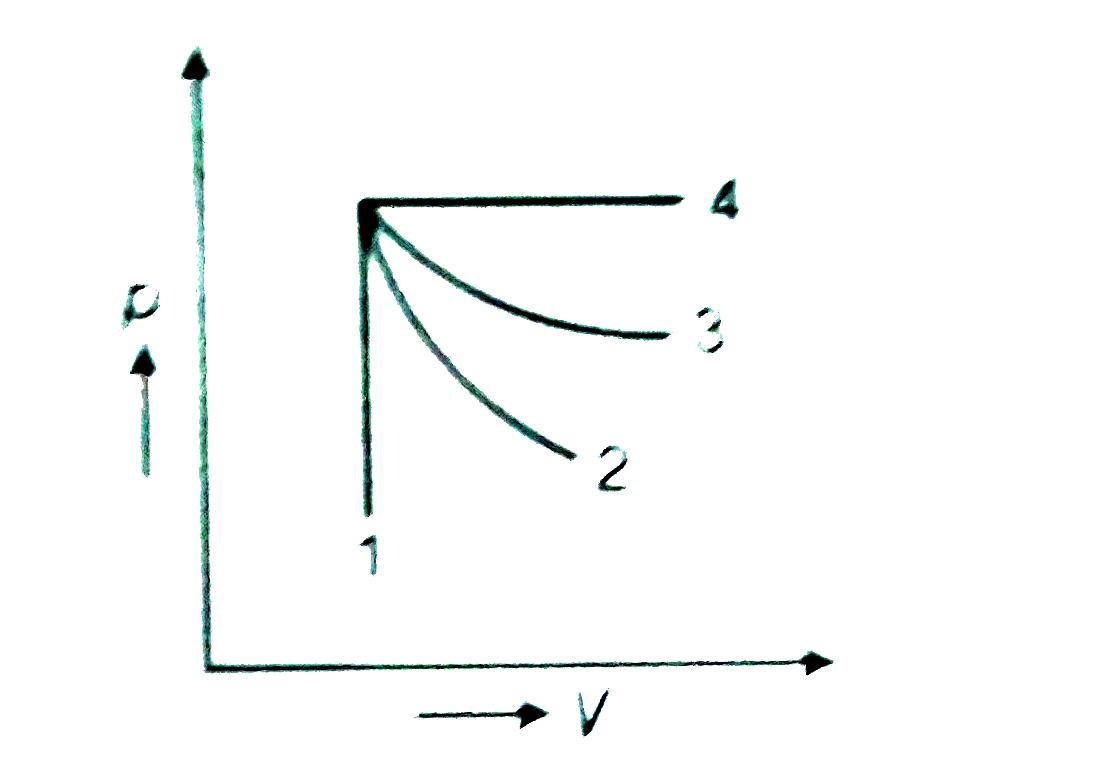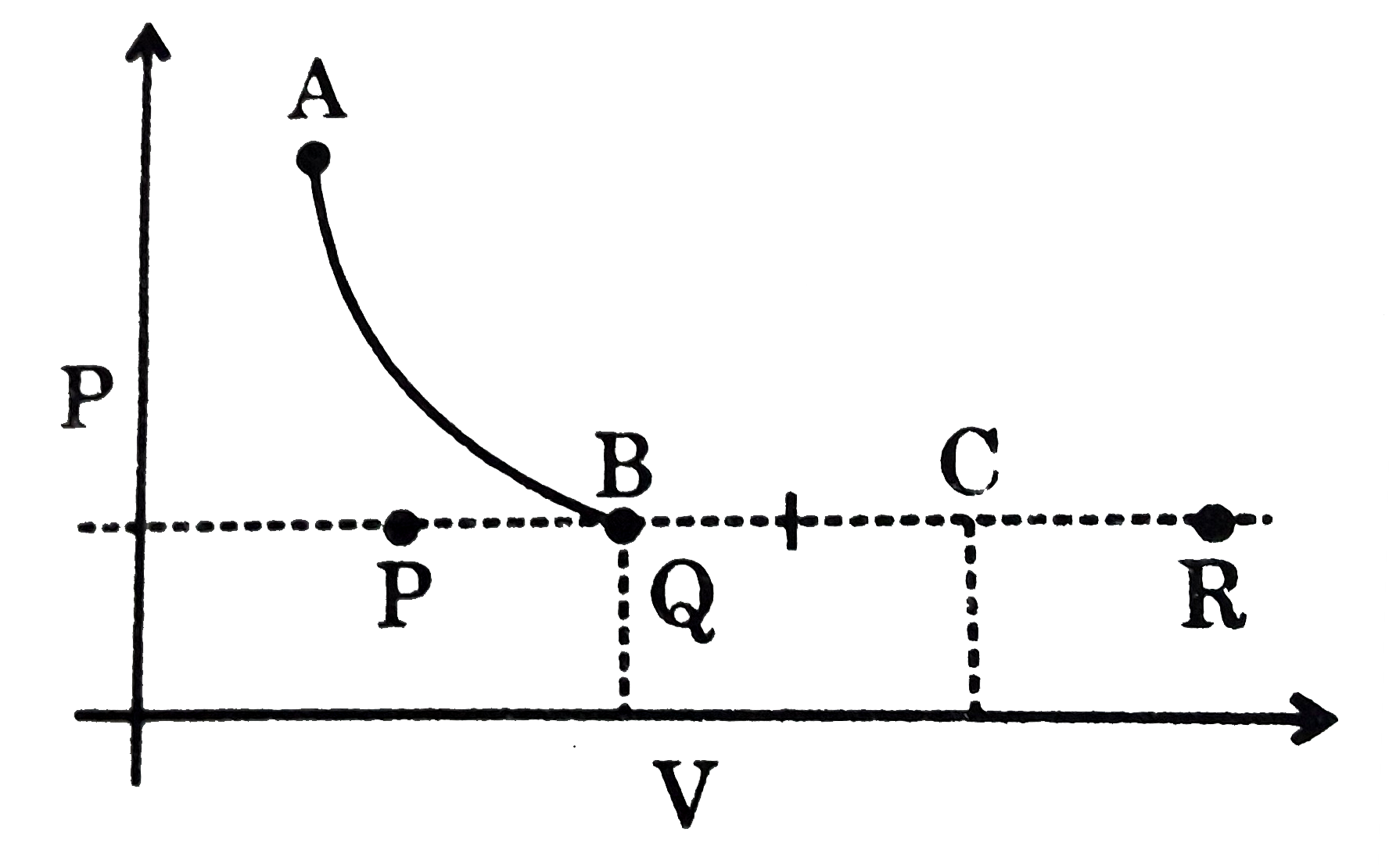An ideal gas is taken from the same initial pressure P1 to the same final pressure P2 by four different process. If it is known that point 3 corresponds to a reversible adiabatic, point 4 corresponds to a single step adiabatic and point 2 corresponds to reversible isothermal. Select the incorrect option (s).

Point 5 may be achieved by two step adiabatic process
Temperature of the gas is more at point 3 than at point 4
Temperature of the gas is more at point 3 than at point 2
Work done in process "1-3" is more than work done in process "1-2".
The correct Answer is:A, B
Topper's Solved these Questions
- GRAPHICAL INTERPRETATIONBOOK - GRB PUBLICATIONCHAPTER - GRAPHICAL INTERPRETATIONEXERCISE - Comprehension 1
1 Videos
- GRAPHICAL INTERPRETATIONBOOK - GRB PUBLICATIONCHAPTER - GRAPHICAL INTERPRETATIONEXERCISE - Comprehension
49 Videos
- GRAPHICAL INTERPRETATIONBOOK - GRB PUBLICATIONCHAPTER - GRAPHICAL INTERPRETATIONEXERCISE - Electrochemistry
9 Videos
- F-BLOCK ELEMENTSBOOK - GRB PUBLICATIONCHAPTER - F-BLOCK ELEMENTSEXERCISE - Subjective type
7 Videos
- HYDROCARBON (ALIPHATIC)BOOK - GRB PUBLICATIONCHAPTER - HYDROCARBON (ALIPHATIC)EXERCISE - Previous years jee questions
28 Videos
Similar Questions
A gas is expanded from volume V1 to V2 through three different process:
a. Reversible adiabatic
b. Reversible isothermal
c. Irreversible adiabatic (against a constant external pressure Pex)
The correct option is
View SolutionAn ideal gas undergoes for different processes from the same initial state (figure). Four processes are adiabatic, isothermal, isobaric and isochoric. Out of 1, 2, 3 and 4 which one is adiabatic ?

View Solution
Knowledge Check
An ideal gas is taken from the same initial pressure P1 to the same final pressure P2 by three different processes. If it is known that point 1 corresponds to a reversible adiabatic and point 2 corrresponds to a single stage adiabatic then:
APoint 3 may be a two stage adiabaticBThe average K.E. of the gas is maximum at point 1CWork done by surrounding in reachingpoint number 3 will be maximumDIf point 3 and point 4 lie along an isotherm, then W4−3>W4−2>W4−1.For an ideal gas three adiabatic processes are carried out upto same final pressure from same initial state. If adiabatic reversible process ends up at point B and adiabatic single step irreversible process ends up at point C then adiabatic free expansion upto same final pressure will end up at :
 AABPCQDR
AABPCQDRA gas is expanded from volume V1 to V2 through three different process:
a. Reversible adiabatic
b. Reversible isothermal
c. Irreversible adiabatic (against a constant external pressure Pex)
The correct option isA[(Tf)Gas]Reversible isothermal>[(Tf)GaS]Reversible adiabatic>[(Tf)Gas]Irreversible adiabaticB[(Tf)Gas]Reversible isothermal>[(Tf)GaS]Irreversible adiabatic>[(Tf)Gas]Reversible adiabaticCwReversible isothermal >wIrreversible adiabatic>wReversible adiabaticD(Pf)Reversible isothermal>(Pf)Reversible adiabatic>(Pf)Irreversible adiabatic
A sample of ideal gas undergoes isothermal expansion in a reversible manner from volume V1 to volume V2. The initial pressure is P1 and the final pressure is P2. The same sample is then allowed to undergoes reversible expansion under adiabatic conditions from volume V1→V2. The initial pressure being same but final pressure is P3.
The work of expansion in adiabatic process (wadi) is related to work of expansion in isothermal process (wiso) is
View SolutionAn ideal gas undergoes for different processes from the same initial state (figure). Four processes are adiabatic, isothermal, isobaric and isochoric. Out of 1, 2, 3 and 4 which one is adiabatic ?

View SolutionAn ideal gas undergoes for different processes from the same initial state (figure). Four processes are adiabatic, isothermal, isobaric and isochoric. Out of 1, 2, 3 and 4 which one is adiabatic ?

View SolutionAn ideal gas undergoes for different processes from the same initial state (figure). Four processes are adiabatic, isothermal, isobaric and isochoric. Out of 1, 2, 3 and 4 which one is adiabatic ?

View SolutionA sample of ideal gas undergoes isothermal expansion in a reversible manner from volume V1 to volume V2. The initial pressure is P1 and the final pressure is P2. The same sample is then allowed to undergoes reversible expansion under adiabatic conditions from volume V1→V2. The initial pressure being same but final pressure is P2.
The work of expansion in adiabatic process (wadi) is related to work of expansion in isothermal process (wiso) is
View Solution
